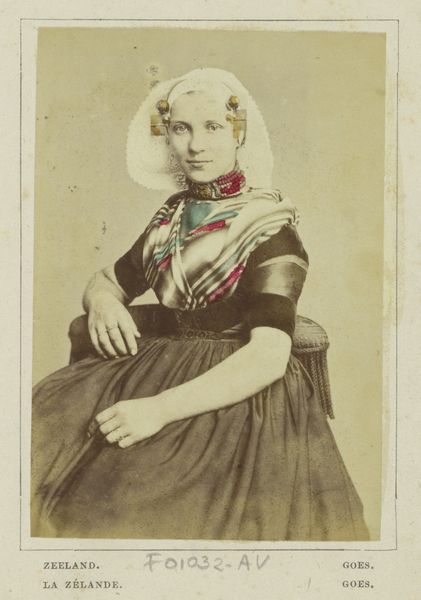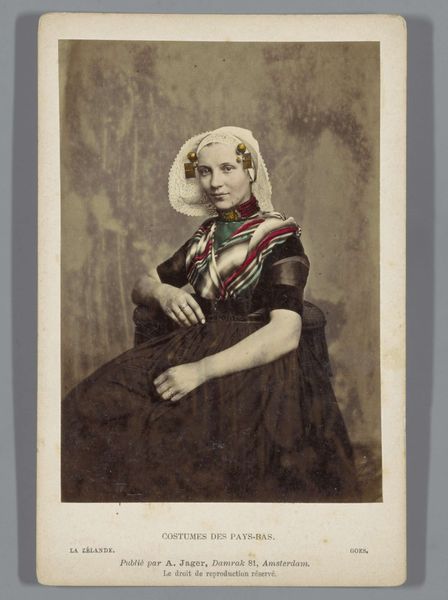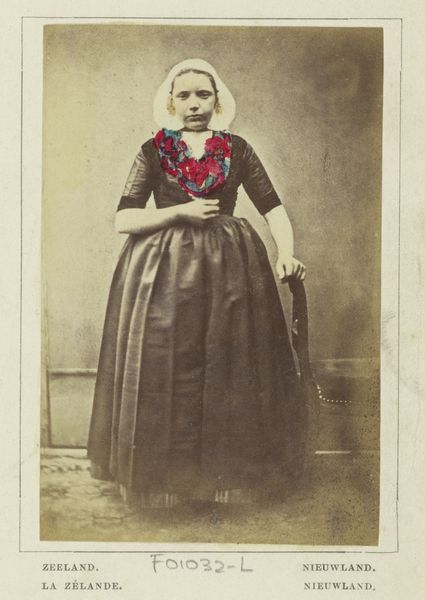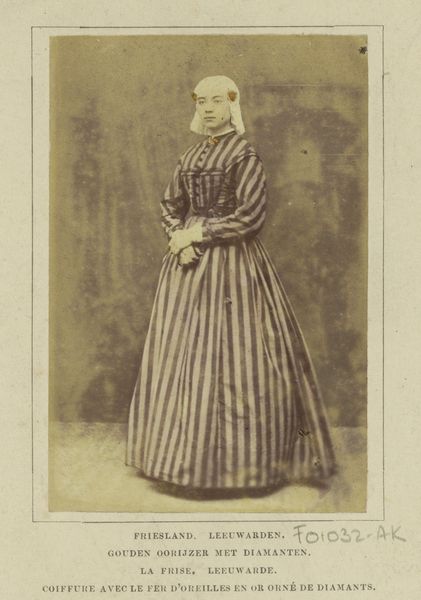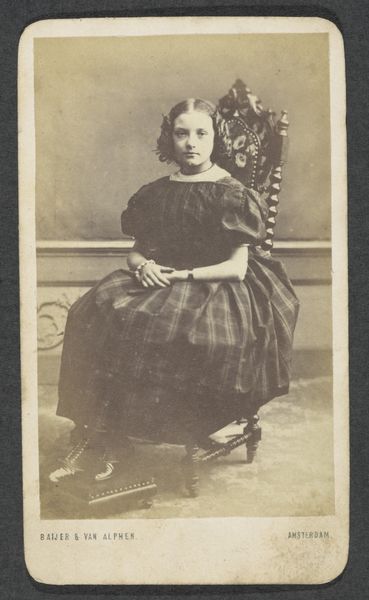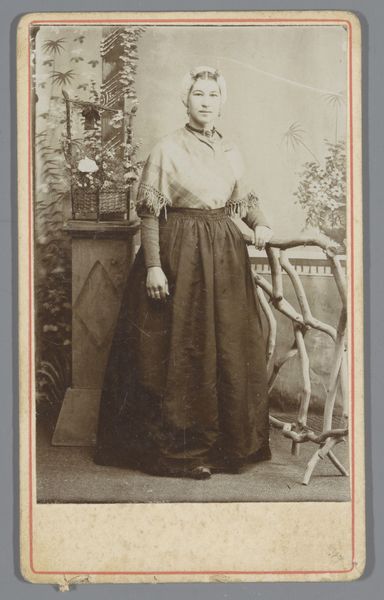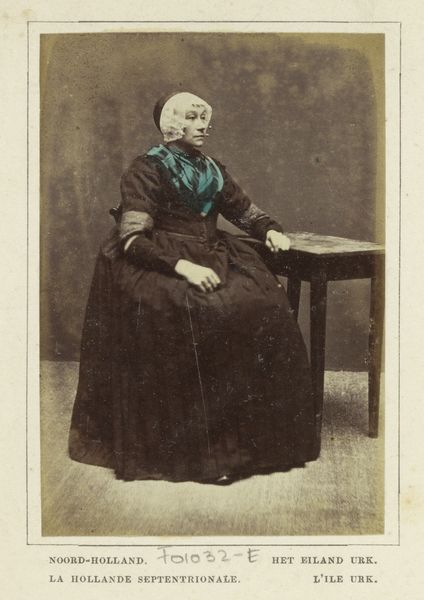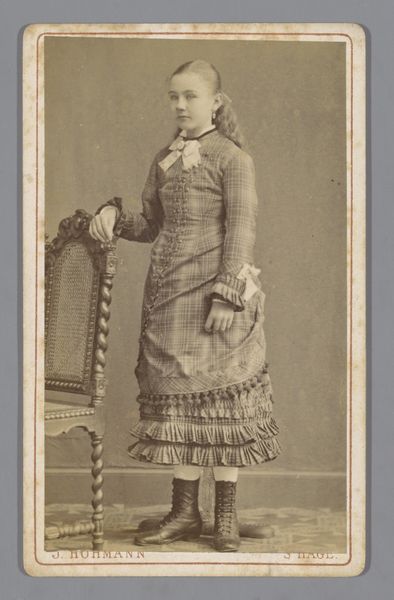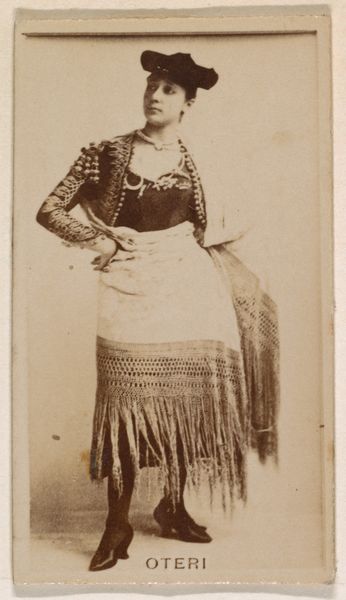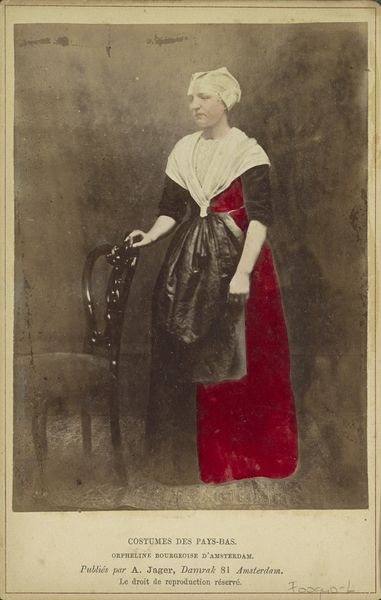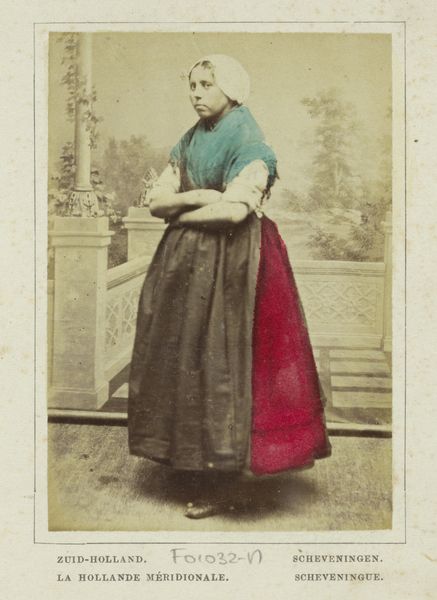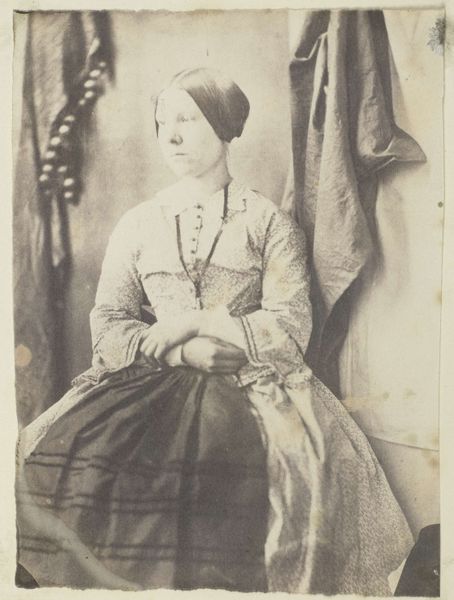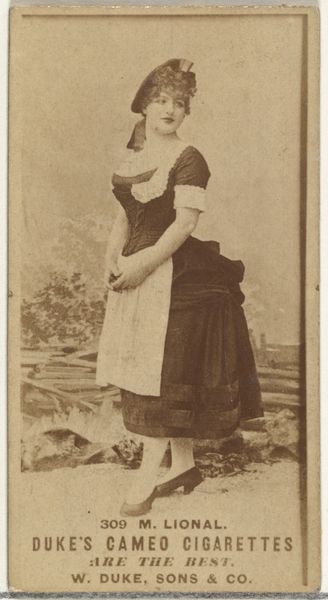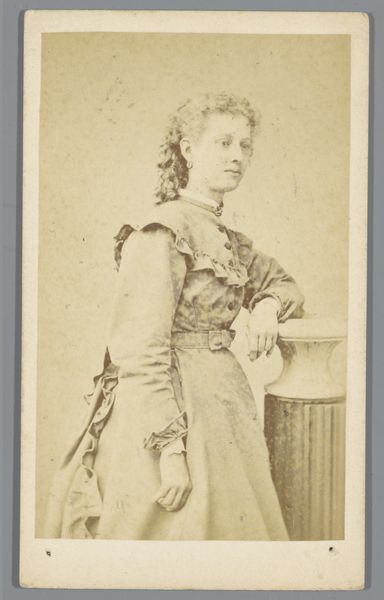
Portret van een onbekende vrouw in klederdracht van Goes, Zeeland 1860 - 1890
0:00
0:00
Dimensions: height 156 mm, width 115 mm
Copyright: Rijks Museum: Open Domain
Curator: Standing before us is a captivating portrait from the late 19th century, titled "Portret van een onbekende vrouw in klederdracht van Goes, Zeeland," believed to be created between 1860 and 1890. It is part of the Rijksmuseum collection. Editor: My initial impression is one of studied serenity. Despite the obvious constraints of early photography, her gaze is strikingly direct. There’s also an undeniable formality conveyed through the sitter's careful pose and her traditional garb. Curator: Indeed. Consider the socio-historical implications of such images. Photography in that era was a means of preserving identity and, crucially, signifying social status. The intricate details of her regional attire—from the lace cap to the elaborate necklace—speak volumes about cultural identity in Zeeland. Editor: Looking at the texture and tonal range, the surface shows how realism blends into this early photography—such incredible material specificity achieved through collage, daguerreotype, coloured pencil, and photography. But what exactly is the emotional affect intended by such rigid depiction? Curator: The blending of media may highlight an interesting tension. While photography aimed for accurate documentation, romanticism as a style choice infuses it with an idealized sensibility, transforming this anonymous woman into an almost archetypal representation of Dutch rural virtue and the popular theme of the time, genre-painting. Editor: True, this might well show a specific Zeitgeist in portraiture, as such art straddles several meanings, reflecting an encounter between the desire for accurate recordkeeping with an interest to evoke deeper romantic sentiments. It captures much more than a simple record, right? Curator: Precisely! We gain insight not only into fashion or cultural mores but also the ways in which the emerging technologies of photography intersect with evolving notions of individual and collective identity. Editor: In a way, it is this collision—a single artwork, formed of so many competing languages and intentions, caught permanently and irrevocably in this framed moment—that resonates most profoundly. Curator: I couldn't agree more. Such work highlights the complex interrelationship between technique, representation, and socio-cultural forces.
Comments
No comments
Be the first to comment and join the conversation on the ultimate creative platform.
